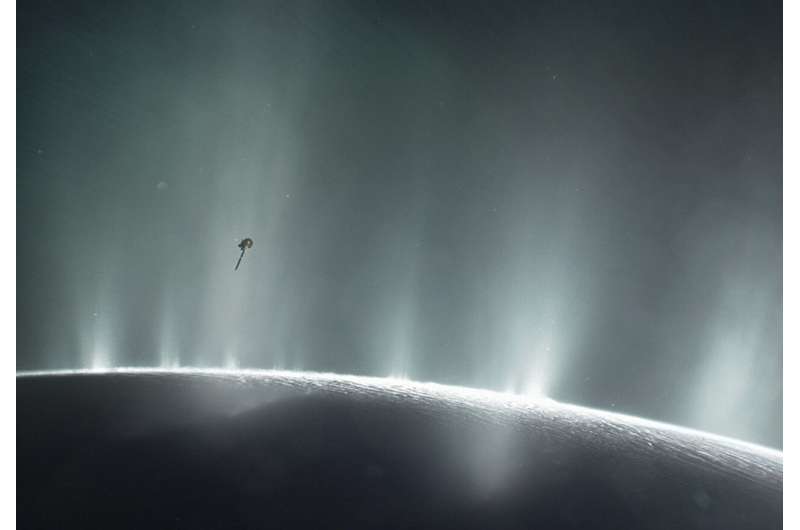Impression of Cassini at Enceladus. Credit: Imperial College London
Two Physics students have turned their first-year project using real data from the Cassini mission into a peer-reviewed paper.
Zeqi Zhang and Xinni Wu, along with their supervisor, Dr. Ravindra Desai, and Dr. Charles Lue from the Swedish Institute of Space Physics, have published their study in The Planetary Science Journal.
When given a range of projects to choose from for their first-year project as undergraduates, Zeqi and Xinni chose to take on some real data gathered by the Cassini spacecraft as it flew by Saturn's moon Enceladus.
They investigated molecules in plumes of material ejected from the moon's oceans, beneath its icy crust, and calculated how long they would last before being destroyed by particles from the Sun.
Dr. Desai was so impressed by their insights, and how they took the study further by calculating the fate of molecules across the Solar System, he recommended they turn it into a paper and try to get it published.
Xinni said: "It felt quite unrealistic, because we had been reading and referencing lots of papers, but it is the first time there will be an actual paper with our names on it, instead of a lab report. It feels even better when we think that what we have done could help more researchers in the future."
The team worked hard, and three years on, as Zeqi and Xinni are preparing to graduate with an MSci in Physics, their paper has been published. Zeqi said: "It's almost like a reminder that we did something that's as impactful as that. It's a time for us to reflect on the degree as a whole; how much progress and improvement we have made."
More information: Ravindra T. Desai et al, Photodetachment and Test-particle Simulation Constraints on Negative Ions in Solar System Plasmas, The Planetary Science Journal (2021). DOI: 10.3847/PSJ/abf638
Journal information: The Planetary Science Journal
Provided by Imperial College London
























